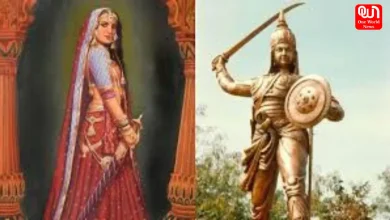Begum Hazrat Mahal: The Rebel Queen Who Defied an Empire
Discover the inspiring story of Begum Hazrat Mahal, the fearless queen of Awadh who led armies and resisted British rule in 1857.
Begum Hazrat Mahal: The Untold Story of the Rebel Queen of Awadh Who Defied British Rule and Led a Historic Rebellion
Born as Mehraj-un-Nisa, Begum Hazrat Mahal’s life began in modest circumstances, far from the grandeur of royalty. Her journey from obscurity to becoming a queen of Awadh is a testament to courage and resilience. She married Nawab Wajid Ali Shah and became Begum Hazrat Mahal, a name that history should never forget.
When the British annexed Awadh under the doctrine of lapse, they didn’t merely seize a kingdom — they inflicted a wound on its pride and spirit. With the Nawab exiled to Calcutta, Begum Hazrat Mahal refused to surrender her homeland silently. Her son, Birjis Qadr, was declared the ruler, and she took charge, assuming the mantle of leadership in a time when women rarely commanded armies.
The year 1857 was a turning point in India’s struggle against colonial power. Amidst the widespread revolt, Begum Hazrat Mahal emerged as a symbol of defiance. She led troops from the streets of Lucknow to the fortresses of Faizabad, coordinating strategies and inspiring loyalty among soldiers, nobles, and ordinary citizens alike. Her determination transformed a mother’s love for her child and her land into a force that challenged the British Empire.
For months, Begum Hazrat Mahal held the British forces at bay. Her ability to unite diverse groups of people and maintain resistance under extreme pressure highlighted her extraordinary leadership. She fought not for personal glory, but for justice, sovereignty, and the dignity of her people. In an era when female leaders were a rarity, she proved that courage and vision know no gender.
read more: Malaika Arora and Rashmika Mandanna Set Dance Floor on Fire in Thamma’s New Song ‘Poison Baby’
However, history has often overlooked the stories of the defeated. As the revolt dwindled, Begum Hazrat Mahal was forced to flee to Nepal, far from the lands she had fought so fiercely to protect. In exile, she lived her remaining days away from the public eye, her heroism largely uncelebrated, yet her legacy endured in the hearts of those who remembered her bravery.
Begum Hazrat Mahal’s story is more than a tale of rebellion; it embodies identity, honor, and the crucial role of women in India’s fight for freedom. While historical narratives often glorify kings and generals, the contributions of women like her remind us that resistance comes in many forms. Her life exemplifies how determination and moral courage can inspire generations long after the battles have ended.
The spirit of Begum Hazrat Mahal continues to resonate, a silent flame of defiance in the cultural memory of Lucknow and beyond. She was not merely a queen of Awadh but a symbol of resistance, proving that leadership and bravery are not constrained by circumstance or gender.
read more: Radhika Merchant’s Crystal-Studded Lace Saree Is All About Grace And Grandeur
As we revisit the events of 1857, it is essential to remember that alongside the men who took up arms, there stood a queen — a mother, a strategist, and a patriot — whose name was Begum Hazrat Mahal. Her story teaches us that true heroism often comes from those who rise against overwhelming odds, driven by love for their land and people.
Begum Hazrat Mahal remains a powerful reminder that history is richer and more complex than textbooks suggest. She fought with courage and conviction, leaving behind a legacy that quietly but powerfully shapes the narrative of India’s struggle for independence. Her rebellion was not just a moment in time; it was a declaration that bravery and justice are timeless.
We’re now on WhatsApp. Click to join.
Like this post?
Register at One World News to never miss out on videos, celeb interviews, and best reads.








